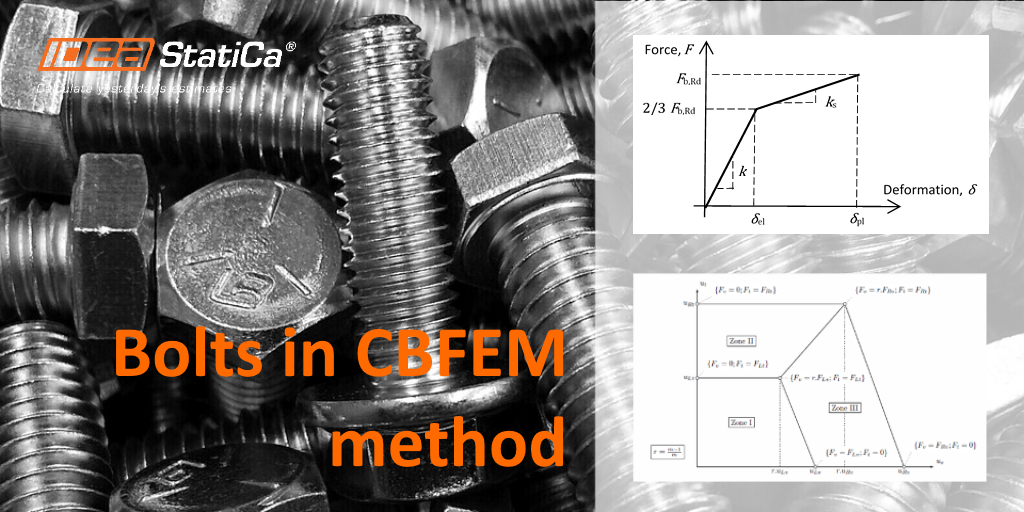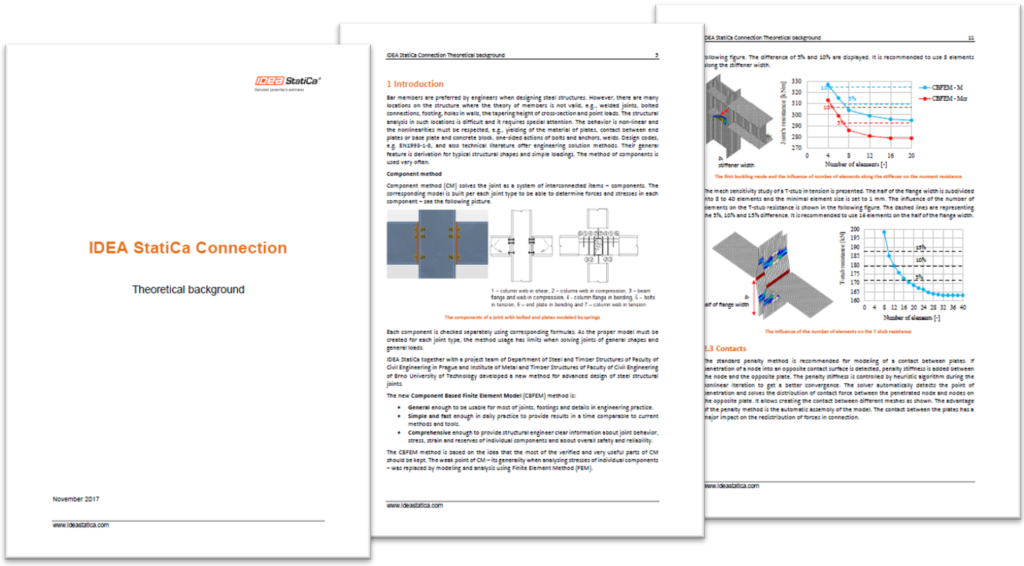In the Component Based Finite Element Method (CBFEM), bolt with its behavior in tension, shear and bearing is the component described by the dependent nonlinear springs. The bolt in tension is described by spring with its axial initial stiffness, design resistance, initialization of yielding and deformation capacity. The axial initial stiffness is derived analytically in the guideline VDI2230.
Only the compression force is transferred from the bolt shank to the plate in the bolt hole. It is modeled by interpolation links between the shank nodes and holes edge nodes. The deformation stiffness of the shell element modeling the plates distributes the forces between the bolts and simulates the adequate bearing of the plate. Bolt holes are considered as standard (default) or slotted (can be set in plate editor). Bolts in standard holes can transfer shear force in all directions, bolts in slotted holes have one direction excluded and can move in this selected direction freely. Interaction of the axial and the shear force can be introduced directly in the analysis model. Distribution of forces reflects the reality better (see enclosed diagram). Bolts with a high tensile force take less shear force and vice versa.
You can read more about the bolts or the CBFEM method in our Theoretical Background document.




